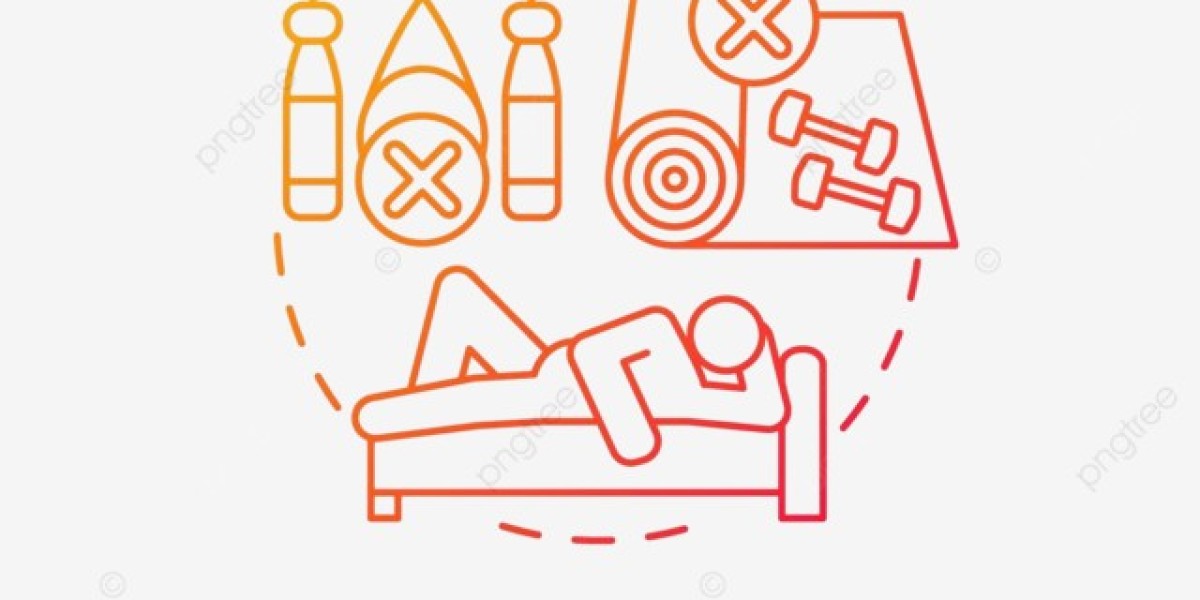In an age defined by technology, convenience, and screen time, physical inactivity has become one of the most pressing global health concerns. A sedentary lifestyle—marked by extended periods of sitting or lying down with minimal physical activity—has been directly linked to numerous health problems. The modern world makes it easier than ever to avoid movement, but the consequences are both immediate and long-term.
This article explores the serious problems of physical inactivity, how it affects every system of the body, and what can be done to counter its devastating impact.
1. Increased Risk of Chronic Diseases
Lack of physical activity is a major risk factor for the development of non-communicable diseases (NCDs). The World Health Organization reports that physical inactivity is one of the leading causes of death globally.
⚠️ Health Conditions Linked to Inactivity:
Heart disease and high blood pressure
Type 2 diabetes due to poor glucose metabolism
Obesity caused by an imbalance between calorie intake and energy expenditure
High cholesterol and triglyceride levels
Certain cancers, including breast, colon, and endometrial cancers
Regular physical activity helps the body regulate blood sugar, blood pressure, weight, and inflammation, all of which are key markers of chronic disease.
2. Weight Gain and Obesity
Physical inactivity is a primary contributor to excess weight and obesity. When calorie consumption exceeds the body’s daily energy needs—especially without movement—fat accumulation occurs.
? Effects of Sedentary Living:
Slower metabolism
Decreased muscle mass
Hormonal imbalance (including insulin resistance)
Poor appetite regulation
Obesity further increases the risk of joint pain, cardiovascular disease, metabolic syndrome, and reduced life expectancy.
3. Muscle Weakness and Bone Loss
The principle of “use it or lose it” perfectly applies to our muscles and bones. A lack of physical movement leads to muscle atrophy, poor flexibility, and weakened skeletal structure.
? Potential Issues:
Sarcopenia – age-related muscle loss accelerated by inactivity
Osteoporosis – fragile bones due to low density
Poor posture and body mechanics
High risk of falls and fractures, especially in older adults
Weight-bearing and resistance exercises help preserve both muscle tone and bone strength.
4. Mental Health Decline
Movement and mental health are deeply interconnected. Sedentary behavior contributes to cognitive decline, emotional instability, and poor psychological resilience.
? Mental Consequences of Inactivity:
Higher rates of depression and anxiety
Increased stress and irritability
Poor self-esteem and body image
Reduced cognitive sharpness and memory
Physical activity stimulates the release of endorphins, serotonin, dopamine, and BDNF (brain-derived neurotrophic factor)—all of which promote mood regulation, mental clarity, and motivation.
5. Poor Circulation and Cardiovascular Health
Without regular movement, the body struggles to circulate blood efficiently, increasing the risk of heart disease and vascular conditions.
❤️ Effects of Poor Circulation:
Blood pooling in legs (can lead to varicose veins)
Increased blood pressure and arterial stiffness
Greater risk of blood clots, stroke, or heart attack
Low endurance and fatigue
Aerobic movement like walking, cycling, or swimming supports heart health and vascular elasticity.
6. Decreased Energy Levels and Fatigue
It may seem ironic, but doing less doesn’t give you more energy—it depletes it. Physical inactivity leads to chronic fatigue, even with adequate sleep.
? Why This Happens:
Reduced oxygen delivery to tissues
Poor metabolism and nutrient absorption
Disrupted circadian rhythm
Sluggish lymphatic and endocrine systems
Movement increases oxygen intake, stimulates energy production, and supports a healthy sleep cycle.
7. Impaired Digestive and Immune Function
Sedentary habits negatively impact both the digestive system and immune response. Regular physical activity helps stimulate the gut, reduce inflammation, and boost immunity.
? Consequences of Inactivity:
Sluggish digestion (constipation, bloating)
Insulin resistance
Increased inflammation
Poor lymphatic drainage
Weakened immunity against infections
Simple movements like walking after meals can significantly aid digestion and immune efficiency.
8. Reduced Lifespan and Quality of Life
The long-term consequences of inactivity go beyond disease—they impact your entire experience of life. Studies show that sedentary lifestyles are linked to early mortality and diminished life satisfaction.
? Life Quality Issues:
Decreased mobility and independence
Increased dependency in older age
Reduced productivity and creativity
Less engagement in hobbies or social events
Movement isn’t just about fitness—it’s about living with freedom, vitality, and joy.
9. Increased Healthcare Costs
Physical inactivity contributes to higher medical bills, frequent doctor visits, and long-term care needs. In many countries, billions are spent annually on preventable conditions caused by sedentary living.
? Financial Impacts:
Chronic disease management
Prescription drugs
Surgeries and rehabilitation
Loss of work productivity
Prevention through regular movement is not only healthier—but also more economical.
Solutions: Overcoming Physical Inactivity
The good news? Even small increases in daily movement can reverse the effects of inactivity.
✅ Actionable Tips:
Take walking breaks every hour during work
Use stairs instead of elevators
Start with 10 minutes of light exercise daily and build up
Stretch or do yoga while watching TV
Join a walking group or online fitness class
Make movement fun with dancing, gardening, or playing with kids
The key is to move regularly, intentionally, and joyfully.
Final Thoughts: Choose Movement, Choose Life
The problems of physical inactivity are real and far-reaching—but they are also preventable and reversible. By integrating simple, consistent movement into your daily routine, you reclaim control over your health, happiness, and longevity.








